Liping Yang
TGGLinesPlus: A robust topological graph-guided computer vision algorithm for line detection from images
Mar 26, 2024



Abstract:Line detection is a classic and essential problem in image processing, computer vision and machine intelligence. Line detection has many important applications, including image vectorization (e.g., document recognition and art design), indoor mapping, and important societal challenges (e.g., sea ice fracture line extraction from satellite imagery). Many line detection algorithms and methods have been developed, but robust and intuitive methods are still lacking. In this paper, we proposed and implemented a topological graph-guided algorithm, named TGGLinesPlus, for line detection. Our experiments on images from a wide range of domains have demonstrated the flexibility of our TGGLinesPlus algorithm. We also benchmarked our algorithm with five classic and state-of-the-art line detection methods and the results demonstrate the robustness of TGGLinesPlus. We hope our open-source implementation of TGGLinesPlus will inspire and pave the way for many applications where spatial science matters.
RF-LighGBM: A probabilistic ensemble way to predict customer repurchase behaviour in community e-commerce
Sep 02, 2021



Abstract:It is reported that the number of online payment users in China has reached 854 million; with the emergence of community e-commerce platforms, the trend of integration of e-commerce and social applications is increasingly intense. Community e-commerce is not a mature and sound comprehensive e-commerce with fewer categories and low brand value. To effectively retain community users and fully explore customer value has become an important challenge for community e-commerce operators. Given the above problems, this paper uses the data-driven method to study the prediction of community e-commerce customers' repurchase behaviour. The main research contents include 1. Given the complex problem of feature engineering, the classic model RFM in the field of customer relationship management is improved, and an improved model is proposed to describe the characteristics of customer buying behaviour, which includes five indicators. 2. In view of the imbalance of machine learning training samples in SMOTE-ENN, a training sample balance using SMOTE-ENN is proposed. The experimental results show that the machine learning model can be trained more effectively on balanced samples. 3. Aiming at the complexity of the parameter adjustment process, an automatic hyperparameter optimization method based on the TPE method was proposed. Compared with other methods, the model's prediction performance is improved, and the training time is reduced by more than 450%. 4. Aiming at the weak prediction ability of a single model, the soft voting based RF-LightgBM model was proposed. The experimental results show that the RF-LighTGBM model proposed in this paper can effectively predict customer repurchase behaviour, and the F1 value is 0.859, which is better than the single model and previous research results.
Next-Day Bitcoin Price Forecast Based on Artificial intelligence Methods
Jun 21, 2021



Abstract:In recent years, Bitcoin price prediction has attracted the interest of researchers and investors. However, the accuracy of previous studies is not well enough. Machine learning and deep learning methods have been proved to have strong prediction ability in this area. This paper proposed a method combined with Ensemble Empirical Mode Decomposition (EEMD) and a deep learning method called long short-term memory (LSTM) to research the problem of next-day Bitcoin price forecast.
Diagram Image Retrieval using Sketch-Based Deep Learning and Transfer Learning
Apr 22, 2020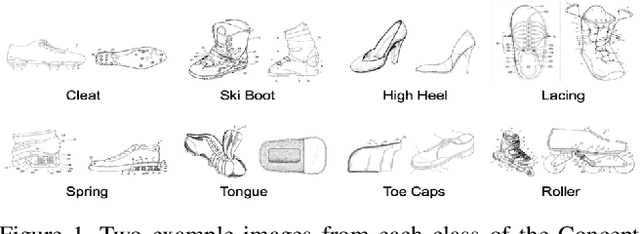
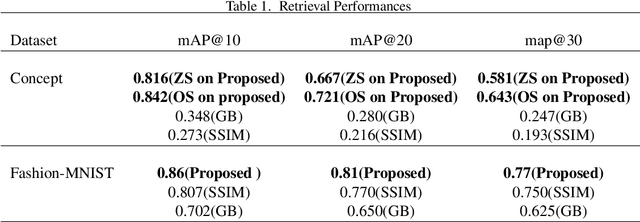
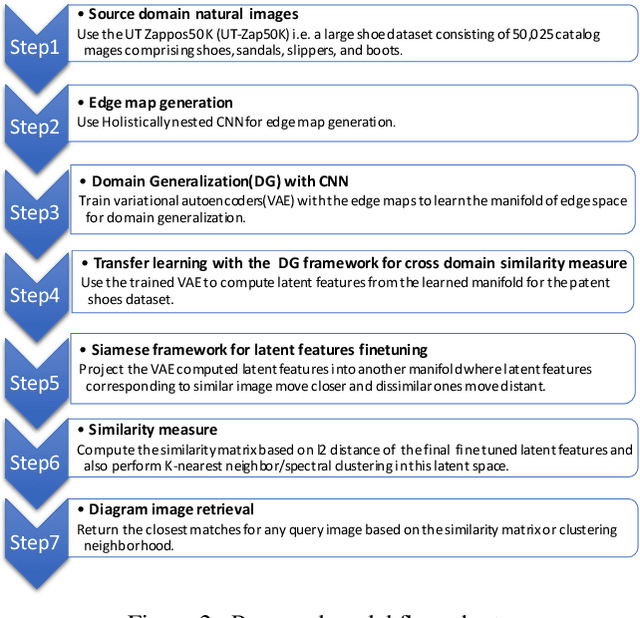

Abstract:Resolution of the complex problem of image retrieval for diagram images has yet to be reached. Deep learning methods continue to excel in the fields of object detection and image classification applied to natural imagery. However, the application of such methodologies applied to binary imagery remains limited due to lack of crucial features such as textures,color and intensity information. This paper presents a deep learning based method for image-based search for binary patent images by taking advantage of existing large natural image repositories for image search and sketch-based methods (Sketches are not identical to diagrams, but they do share some characteristics; for example, both imagery types are gray scale (binary), composed of contours, and are lacking in texture). We begin by using deep learning to generate sketches from natural images for image retrieval and then train a second deep learning model on the sketches. We then use our small set of manually labeled patent diagram images via transfer learning to adapt the image search from sketches of natural images to diagrams. Our experiment results show the effectiveness of deep learning with transfer learning for detecting near-identical copies in patent images and querying similar images based on content.
TGGLines: A Robust Topological Graph Guided Line Segment Detector for Low Quality Binary Images
Feb 27, 2020
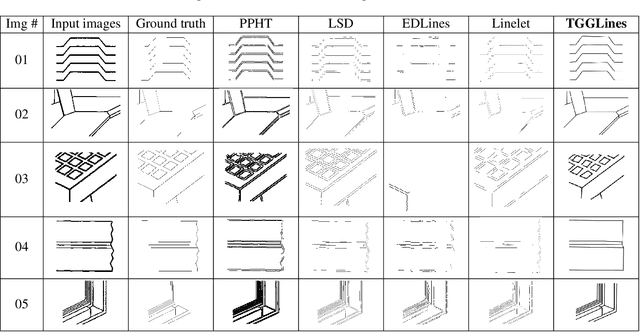
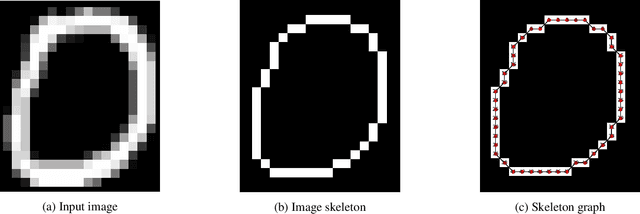
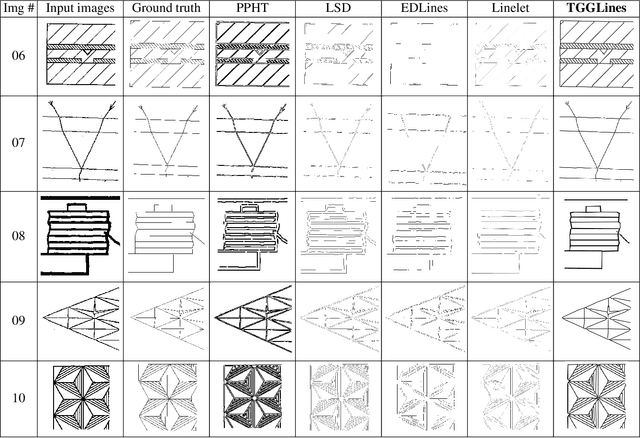
Abstract:Line segment detection is an essential task in computer vision and image analysis, as it is the critical foundation for advanced tasks such as shape modeling and road lane line detection for autonomous driving. We present a robust topological graph guided approach for line segment detection in low quality binary images (hence, we call it TGGLines). Due to the graph-guided approach, TGGLines not only detects line segments, but also organizes the segments with a line segment connectivity graph, which means the topological relationships (e.g., intersection, an isolated line segment) of the detected line segments are captured and stored; whereas other line detectors only retain a collection of loose line segments. Our empirical results show that the TGGLines detector visually and quantitatively outperforms state-of-the-art line segment detection methods. In addition, our TGGLines approach has the following two competitive advantages: (1) our method only requires one parameter and it is adaptive, whereas almost all other line segment detection methods require multiple (non-adaptive) parameters, and (2) the line segments detected by TGGLines are organized by a line segment connectivity graph.
 Add to Chrome
Add to Chrome Add to Firefox
Add to Firefox Add to Edge
Add to Edge